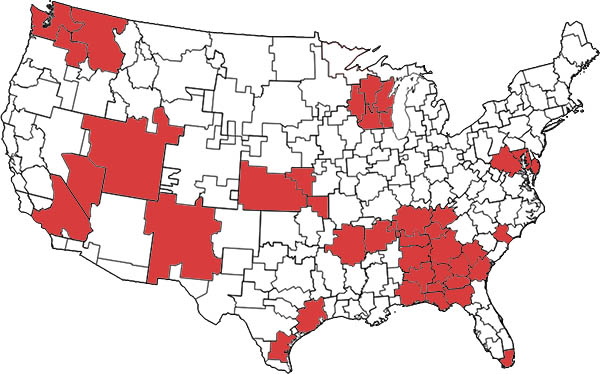Advanced Search
Lots of Rain? Don't Hydroplane. Here's How You Can Drive Safely on Wet Roads
Wet roadways present some driving hazards that can catch drivers off guard, especially hydroplaning. Hydroplaning means a loss of traction and sliding on a film of water. Wet road surfaces can cause tires to hydroplane. This could result in the loss of control and steering ability, as your tires may lose contact with the pavement. It's a scary feeling to suddenly feel your car hydroplaning, but here are some things you can do to recover quickly if you hydroplane.

How to handle a tailgater
Chances are, if you have driven on any road beyond your driveway, you’ve looked up in your rearview to see the front grill of the car behind you filling the mirror entirely. It’s irritating, nerve-racking, and unsafe. Sometimes drivers do it without knowing, especially if they are distracted, other times it’s obvious they are trying to get on your nerves. You aren’t responsible for another driver’s careless driving, but there are a few things you can try to get away from a tailgater.
The impossible texting and driving test
I'd like to share this video that tells a compelling story about how it's impossible to text and drive at the same time.
"Plenty of people will crash, I'm telling you," says one student as he begins the test. He's right. Current statistics from the National Highway Traffic Safety Administration's site on distracted drivingshow that each day in the United States, more than 9 people are killed and more than 1,153 people are injured in crashes that are reported to involve a distracted driver. Every day.
Click here to see the video showing how impossible it is to safely text and drive at the same time.
Wildfires are currently raging all over the western United States. From where I sit in Idaho, evacuations are happening all around, including to the west, where three firefighters just died battling wildfires in Twisp, Washington.
Be careful when transporting fragile goods: wear a bicycle helmet
Did you know that some cities do not require bicyclists to wear helmets? There is no state law mandating their use, either. This is surprising, due to statistics showing that “helmet use has been estimated to reduce head injury risk by 85 percent,” according to the Bicycle Safety Helmet Institute, a volunteer advocacy group. Go here to learn how helmets protect you, and why you should never get on your bike without one.
Tips for motorists on sharing the road with bicyclists
As the weather warms, more people take their bicycles on the road, for commuting to work, helping the environment, exercise, recreation, and to save on automobile expenses. As bicycling gains in popularity, also on the rise is the likelihood of a crash with a car, truck, or other vehicle – and, so often, these crashes result in serious injury or death to the cyclist involved. In sharing the road with bicyclists, motorists can do a few simple things to make everyone's journey safer. Click here for tips on how to avoid common errors that drivers sometimes make that can result in serious injury or death.
How to handle hydroplaning on the freeway
Wet roadways, especially prevalent here in the Pacific Northwest, present some driving hazards that can catch drivers off guard. One of those hazards is hydroplaning. Hydroplaning means a loss of traction and sliding on a film of water. Wet road surfaces can cause tires to hydroplane. This could result in the loss of control and steering ability, as your tires may lose contact with the pavement, and an accident might happen within seconds. It's a scary feeling to suddenly feel your car hydroplaning, but here are some things you can do to recover control of your vehicle quickly.
